Introduction
If you’re at all a fan of quality seafood, you’ve most likely eaten mahi mahi – amloshk. There’s even a good chance you may have ordered it under a totally different name, and not even realized it. It’s a fish of many names, and even more culinary uses, but what exactly is mahi mahi – Amloshk?
They are among the fastest swimmers in the sea. The word mahi-mahi comes from the Hawaiian name for the fish, meaning “strong strong”. A powerful fish, Mahi Mahi quickly and deftly swims through all the warm waters of the world, from the Caribbean to the Pacific Ocean.
Apart from being a beautiful fish, Mahi Mahi is among the top fish used commercially at restaurants and events because of its cooking versatility.
Flavor Profile
Mahi-mahi has lean flesh with a mild, sweet flavor profile, moderately firm texture, and large, moist flakes. The skin is thick and should therefore be removed before cooking. Fresh Mahi Mahi has translucent pinkish flesh and a bright red bloodline. If the bloodline is brownish or dull then the fish is old
Nomenclature
- English Name: Mahi Mahi, Dorado
- Local Name: Aab-Rose, Amrusk, Amroos & Amloshk
- Scientific Name: Coryphaena hippurus
Habitat
Mahi Mahi is a Sea fish that mainly lives in Pelagic, inhabiting open waters but also approaching the coast.
Catching Method
Mahi Mahi is caught using Gillnets, Hook lines & Line Gears.
Physical Attributes
Mahi Mahi has Scales on the body. A single dorsal fin extending from above eye almost to caudal fin with 58–66 rays, pectoral fins more than 1/2 of head length, caudal fin deeply forked.
Color
Mahi Mahi is brilliant metallic blue-green when alive, fading after death to grey with a green tinge, sides are silvery with a golden sheen and rows of dark spots or golden blotches, dorsal and anal fins black, the latter with a white edge.
Size
On average, the Mahi Mahi size range is 3 kg to 7 kg per fish. However, Other sizes are also occasionally available.
Cutting Preferences
Mahi Mahi is preferred for Boneless Fillets, Boneless Biscuits, and Boneless Fingers
Approx. Cutting Yields
- Whole: 100%
- Gutted: 75%
- Headless and Gutted: 65%
- Slices: 60%
- Boneless: 47%
Cooking Preferences
Mahi Mahi is preferred to Grill, BBQ, Fry, Steam, and Bake
Health Benefits
- Heart friendly
- Lowers Blood Pressure
- Improves Immune System
- Improves Skin and Hair health

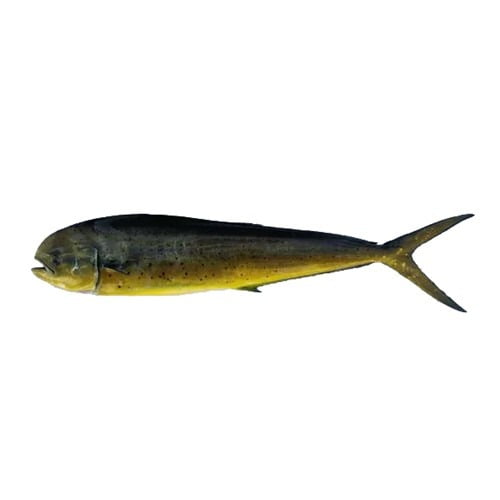
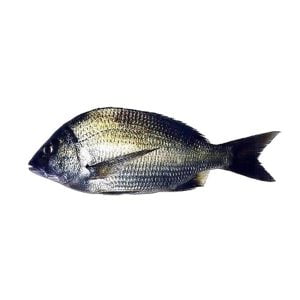
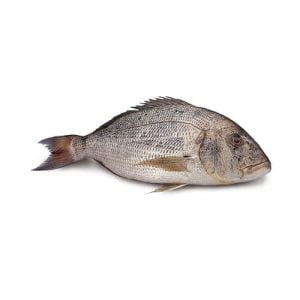
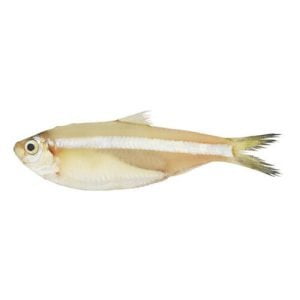
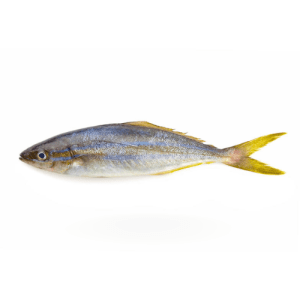

Muhammad Ahmer –
I highly recommend giving Mahi Mahi a try. Its delicate taste and versatile cooking options make it a wonderful addition to any seafood feast.